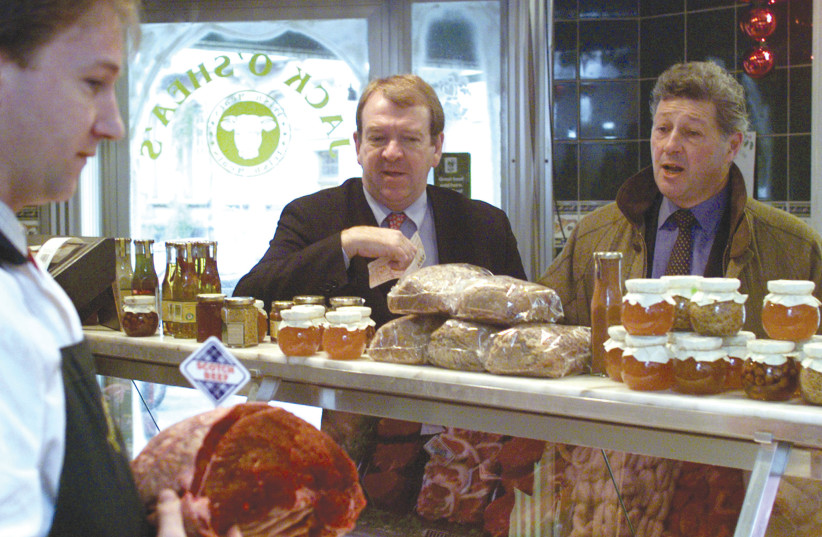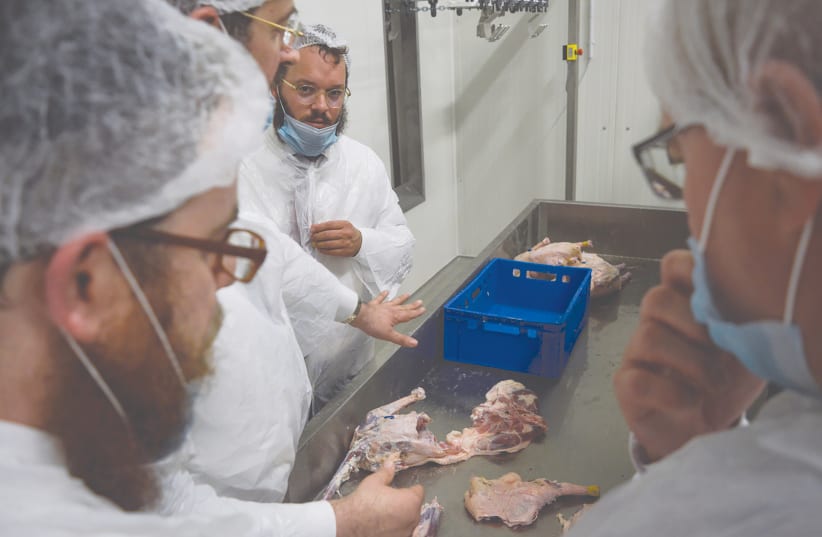BUDAPEST – Jews in Belgium have been campaigning against the shechita ban being debated in the country’s various parliaments for months now. Last Friday, they won in the Brussels-Capital Region Parliament.
The ban, however, was adopted by Belgium’s two other regional parliaments, igniting a tense debate about animal rights, basic religious freedoms and the obvious follow-up question: What role, if any, does antisemitism play in all this?
“How can it be that the people who are advocating for the ban are the same people coming every year to Holocaust remembrance ceremonies, giving money to protect synagogues and schools, and, in many cases, are the same ones defending Israel in parliament? How can these be the same people?” Michael Freilich, a member of the Federal Parliament in Belgium from the New Flemish Alliance Party, told The Jerusalem Post.
“The story is a nuanced one,” he answered. “People say Belgium and Europe are antisemitic because they want to ban it – but that is a little bit too easy to say.”
The background

Last Friday, the Brussels-Capital Region Parliament’s General Assembly voted to uphold a vote that had previously passed in a parliamentary committee to reject a ban on ritual slaughter.
The vote to reject the ban passed by a close margin: 42-38, with eight abstentions, according to the Jewish Chronicle. The ban itself was proposed by Bernard Clerfayt, the Belgian animal welfare minister.
Some countries have laws that require an animal to be stunned before the cut is performed (“pre-cut stunning”), after the cut is performed (“post-cut stunning”), or at the same time as the cut (“concurrent sedation”), a 2018 United States Commission on International Religious Freedom explained.
Back in 2002, the European Court of Justice published a decision that allowed EU member states to ban slaughter that doesn’t include pre-stunning. Kosher and halal animal slaughter guidelines entail a specific ritual for killing the animals, which does not include it.
This decision – which includes shechita and halal – was upheld in a ruling by the Belgian Constitutional Court in October 2021. Prior to the ruling, the bans were enacted in the Belgian regions of Flanders and Wallonia in 2017, constituting most of the state. These bans went into effect on January 1 and August 31, 2019, respectively.
“I’m not here to argue it’s the best method. I don’t think we should argue it’s the best method. I think we want to argue it’s an acceptable method.”
Bar-Ilan scientist Rabbi Ari Zivotofsky
“The argument that something has been happening for a thousand years is not a strong one, because some [of the things we’ve been doing are] bad,” Freilich told audience members at the European Jewish Association’s annual conference earlier this week.
How does shechita work?
The cut itself is “made with a smooth sharp knife so that the cut itself causes minimal pain,” Bar-Ilan scientist Rabbi Ari Zivotofsky explained at the EJA conference.
“When you cut with a razor, you often don’t feel the cut as it happens, but you’ll feel it after. Why does this happen? Because your pain receptors are now exposed. In slaughter, you cut the neck, it opens wide, avoiding the pain receptors. There is no pain from the cut.”
Zivotofsky explained that there is an immediate drop in blood pressure due to the severance of several major arteries in the neck, which stops the blood flow to the brain. For sheep and goats, it takes about 10 seconds; for cattle, 20-30.
“I’m not here to argue it’s the best method. I don’t think we should argue it’s the best method. I think we want to argue it’s an acceptable method,” said Zivotofsky.
The animal rights argument
“The Jewish community was not ready, was not organized, did not have one point of view and did not have any scientific evidence to back up its position. Till today, the community doesn’t know what the correct strategy is,” Freilich told the Post.
“Some say we should advocate that it’s a freedom of religion issue. Others say no, we should not, it’s an animal rights issue, and our way is more or as humane as the other ways.
“Choose your strategy,” said Freilich.
But the issue bleeds into the two minority communities fighting the ban at the parliamentary level: Jews and Muslims. That’s where it gets even more complicated.
“A shohet needs to be trained for eight years. By the Muslims – anyone and everyone can slaughter on the holy day. You get a sheep, you get a knife, [and] go ahead. I’d be terrified, and the animal would feel that. Everything would go wrong,” Freilich said.
In Belgium, one in 100 animals that are slaughtered are kosher. “So, when they bring this bill to the parliament, they’re not talking about us; it’s mostly about halal meat. Should we have made a stronger point to point out the differences? I think we should have,” said Freilich.
Shechita has been around in Belgium for hundreds of years. Why is this cropping up now?
Because of the way science has advanced, he explained. We now understand more than ever and have come the furthest in animal rights.
The religious freedom argument
“One of the most pressing issues [today] is the freedom of religion. Too many states have enacted or made attempts to enact laws to ban religious slaughter. These laws also bring a bad name to the Jewish people,” said Rabbi Menachem Margolin, chairman of the EJA.
The concept of religious freedom as a basic right makes sense and is a pillar of the democratic process. It is also stipulated in Article 18(1) of the UN’s International Covenant on Civil and Political Rights (1966): “Everyone shall have the right to freedom of thought, conscience and religion.”
What is behind the ban, then? How could it go against something so basic?
According to Greek MP and EJA Advisory Board member Konstantinos Karagounis, that’s a flawed approach: “Every fundamental right can be constrained. In my opinion, this is not the real substance of what we need to be concentrated on.
“This is why I propose to shift our logic, direction and goal: It’s not only about fundamental rights, because then a lot of Islamists would say that they could do crazy things and that they fall under their “fundamental right of religion.” The reason kosher slaughter is correct is because it has survived through the years.”
Freilich concurred: “You can’t say freedom of religion is absolute, because some are new and cannot really be adapted to our modern way of life in Europe. You can’t marry a daughter off at 12, and you can’t chop off a hand. The Jewish community has become collateral damage [in this debate.]”
The different positions of the Muslim and Jewish communities further complicate the debate. “It’s not just Jews, and it’s not antisemitism; it’s a nuanced debate.”
“The government is not antisemitic. I would tell you if I thought they were,” Phillipe Scharf, co-president of the Antwerp Jewish Forum, a Jewish organization that acts as a buffer between community and government, told the Post.
But, he said, there’s always room for improvement. “It’s not normal that a Jewish community is not able to perform ritual slaughter. It’s been around for hundreds of years; there’s no reason why it shouldn’t be.”
The Jewish community makes up 0.1% of the population of Europe, 15 times less than the Muslim population.
“A lot of my colleagues are against how we do it, but they are not antisemites. They just don’t realize the entire breadth of the story; they don’t see the nuances.”
